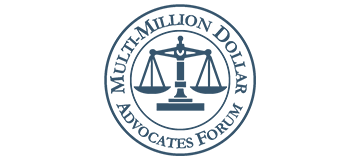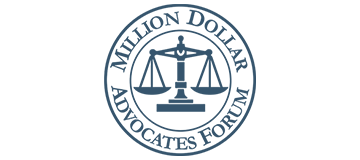“The customer is always right.” How many times have we heard that well-known concept? But what happens when, despite doing everything in your power to help a client, their life remains negatively affected after a case?
The following case helps to illustrate the challenges we sometimes face when trying to meet clients’ expectations—and, perhaps even more important, the challenges clients face trying to make sense of unimaginable injury or loss.
A car accident changes everything
The event that preceded Dierdre Jenson’s* life being turned upside down was something many of us can identify with: sitting in traffic.
One day during rush hour, as Dierdre was trying to get on the interstate, a large truck hit her from behind. The truck, loaded with scrap metal, couldn’t brake soon enough and knocked Dierdre into the car in front of her. Fortunately, it wasn’t a fiery wreck, but there had been damage to the vehicles, and Dierdre went to a local hospital to be treated.
Although she’d gone to the ER, she wasn’t admitted. Instead, she was sent home with some ice packs and instructions to check back if the pain she was experiencing didn’t subside. As it turns out, after a week or so she was feeling worse, with joint pain, back pain, and headaches.
She continued to go back to the doctors, who thought maybe she was stiff from the accident or had experienced a sprain in her neck. Each time she was sent home with more Ibuprofen and other medication. But her injuries and pain persisted.
The accident had occurred in the summer and she was supposed to start a PhD program that fall in Ohio (she lived in Canada), but she simply couldn’t—she had become incapacitated in ways that nobody really understood or had foreseen.
Meanwhile, her condition seemed to get even worse.
For a free legal consultation, call (614) 481-6000
An unexplained spiral of pain
She was referred to us, and we filed suit on her behalf. It looked like a relatively minor lawsuit at first, but as we spoke with her and dug into the case, we just couldn’t shake the notion that she was experiencing one of those invisible injuries that won’t show up on an MRI or a CAT scan. It was something that was very difficult to diagnose and test.
Yet it was clearly very real for Dierdre. From her perspective, her injury had been a debilitating, life-altering event, every bit as serious as if she had been paralyzed in the car accident. Essentially, she could no longer enjoy even the simplest parts of life that many of us take for granted like working or shopping. The injury had significantly affected her life plans—it prevented her from starting the PhD program she had been planning on that fall.
Pursuing justice
We spent considerable time researching her condition, trying to get a handle on fibromyalgia and its causes, and whether fibromyalgia could have been traumatically induced in Dierdre’s case. Fibromyalgia is a disorder characterized by various types of chronic joint and soft tissue pain, many of which Dierdre was experiencing. The problem, however, is that it’s difficult to medically identify or diagnose.
Considering the serious pain and disruption Dierdre was experiencing, we made a demand for the limit of the defendant’s auto insurance policy. The defense attorneys laughed—given the minor property damage, low speed of impact, and lack of any readily identifiable injuries, they felt our demands were unreasonable.
So we went to trial. and although there had been differing opinions among jury members as to the severity of Dierdre’s condition, we won. The verdict was, at the time, the highest ever in that county for what is known as a soft tissue injury—basically an injury that doesn’t involve a broken bone, or that won’t show up on an MRI.
Yet Dierdre was devastated. Given how dramatically her life had been altered, she’d expected a much larger compensation.
Click to contact our personal injury lawyers today
The client’s challenge: identifying one’s needs
We take great pains trying to understand our clients’ objectives, goals, and expectations of what the civil justice system will provide. This allows us to make clear right from the offset what the justice system can and can’t do, and what juries are likely to do when it comes to providing compensation. This approach makes sense; it not only helps rein in unrealistic expectations, but it ensures we’re seeing the case from our clients’ perspective, so they can receive the justice they require.
But accident cases aren’t always so clear-cut. and really, how could they be? Imagine yourself in Dierdre’s shoes, your life and livelihood drastically altered by crippling, unexplained pain, only to have doctors tell you, “Well, we can’t see anything wrong with you.”
In our many conversations with Dierdre’s husband, he explained that the car accident had changed not only her life, but her behavior as well. She started seeing one doctor after another, becoming more and more distrustful when none were able to provide her explanations or solutions.
When faced with such a situation, what do you ask of the justice system? To have your health back? To have the medical community properly diagnose and acknowledge your pain? Wouldn’t you do virtually anything for the chance to have your old life back? Ask for virtually any amount? Looking at the process from Dierdre’s perspective, it’s no wonder her expectations of justice were so high—or, for that matter, so hard to meet.
Complete a Free Case Evaluation form now
The Ohio accident attorney’s challenge: meeting a client’s needs
Although we may not have provided Dierdre with as much compensation as she had hoped for, we were able to help her in other ways. Besides the compensation, which could help pay for treatment and, ideally, rehabilitation, we made sure she got a jury trial—a public forum where she could tell her story and explain in her own words what she was going through. This was important. Through the jury’s verdict, we think she recognized on some level that the jury members understood she hadn’t been in a simple fender bender, and we believe that gave her some comfort.
Unfortunately, though, we just don’t know to what extent our work helped Dierdre, or whether she was ever able to recover from her injuries. One of the consequences of her increased distrust of people was that she became extremely difficult to contact. She had only provided a post office box mailing address, not her residence, and when we tried several times to talk with her on the phone after the trial, she couldn’t be reached.
Measure of success
It’s tough. As Ohio accident attorneys, we become plaintiff’s lawyers because we want to help people through difficult circumstances. and we like to think that if we do the best we can and really dig in and work hard, we’ll provide them with that support. But the fact is, sometimes all of our hard work isn’t enough. Sometimes, especially in terms of the healing process, we just can’t deliver everything clients want or need.
That said, cases like Dierdre’s accomplish something special. They serve as reminders that we can’t just pat ourselves on the back and say, “What a great job we’ve done — we got a nice verdict or settlement.” Because that’s not ultimately what matters.
Our clients’ lives go on after the trial. and the quality of those lives after a major injury or tragedy is what really matters the most.
*Names in this article have been changed to protect our client’s privacy.
The outcome of any client’s case will depend on the particular legal and factual circumstances of the case.
Call or text (614) 481-6000 or complete a Free Case Evaluation form
















































